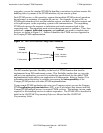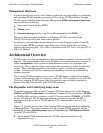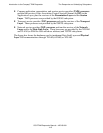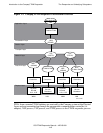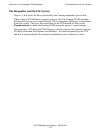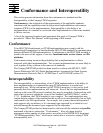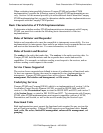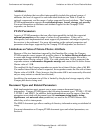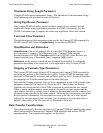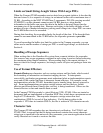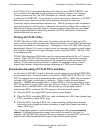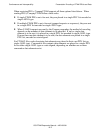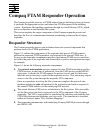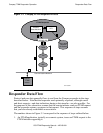Conformance and Interoperatility
OSI/FTAM Responder Manual—425199-001
2-3
Limitations on Value of Future-Filesize Attribute
Attributes
Aspects of attributes that can affect interoperability include the optional groups of
attributes, the level of support for each individual attribute (see Table 4-4) and its
optional components, and the range of values supported for each attribute. The Compaq
FTAM implementation supports three attribute groups: kernel, storage, and security.
For more information on attributes and attribute support for the Compaq FTAM
responder, see Section 4.
FTAM Parameters
Aspects of FTAM parameters that can affect interoperability include the supported
optional parameters and the range of values for all parameters. If they are to
interoperate, both implementations must support all parameters and ranges required by
the services to be performed. For more information on the optional parameters and
parameter value ranges supported by the Compaq FTAM responder, see Section 4.
Limitations on Value of Future-Filesize Attribute
Because of file-size limitations imposed by the Guardian file system, the Compaq
FTAM responder cannot support all possible values of the future-filesize attribute sent
in create and change-attribute requests. The Compaq responder creates files with a
maximum future-filesize value of 1 GB. If a value greater than 1 GB is requested, the
responder returns an informative diagnostic message and creates the file with a future-
filesize value of 1 GB.
The smallest file the Compaq responder can create has a future-filesize value of 64 KB.
If a smaller future-filesize value is requested, the responder creates the file with a future-
filesize value of 64 KB. (Note, however, that the entire 64K is not necessarily allocated;
only as many extents as needed are allocated.)
In addition, the maximum size of files is limited by the physical storage capacity of the
Compaq disk device being used.
Document Types and Related Parameters
Both implementations must support one or more common document types to
interoperate. Compaq FTAM supports the following document types: FTAM-1, FTAM-
2, FTAM-3, and NBS-9. In addition, both implementations must be aware of how the
parameters associated with document type (the maximum-string-length, string-
significance, and universal-class parameters) are used in the FTAM software with
which they wish to interoperate.
The NBS-9 document type allows reading of directory information using an attribute bit
string.
For more information on Compaq FTAM document types and related parameters, see
Section 4.



